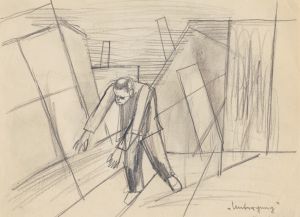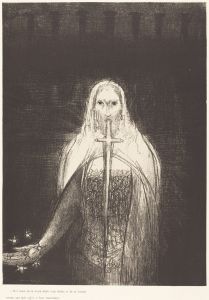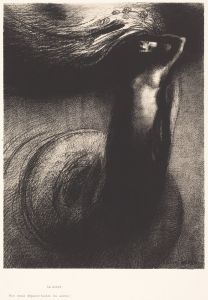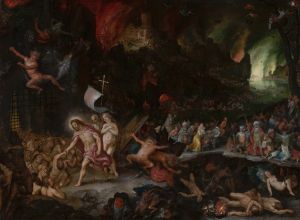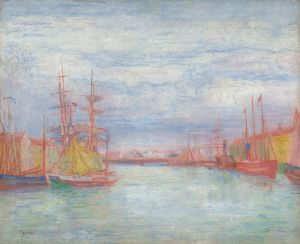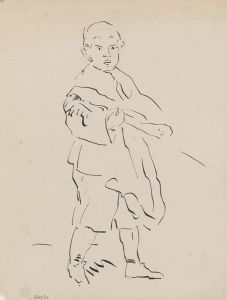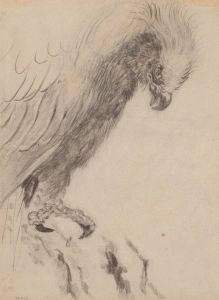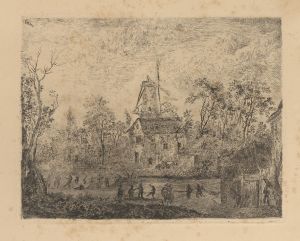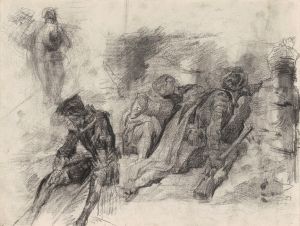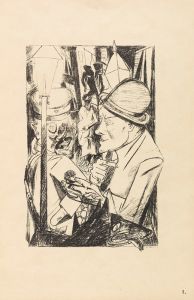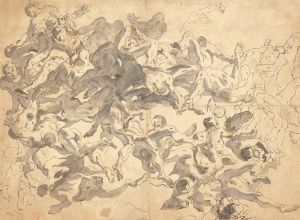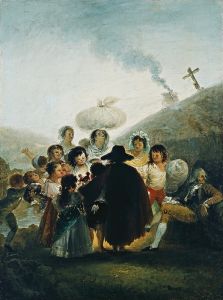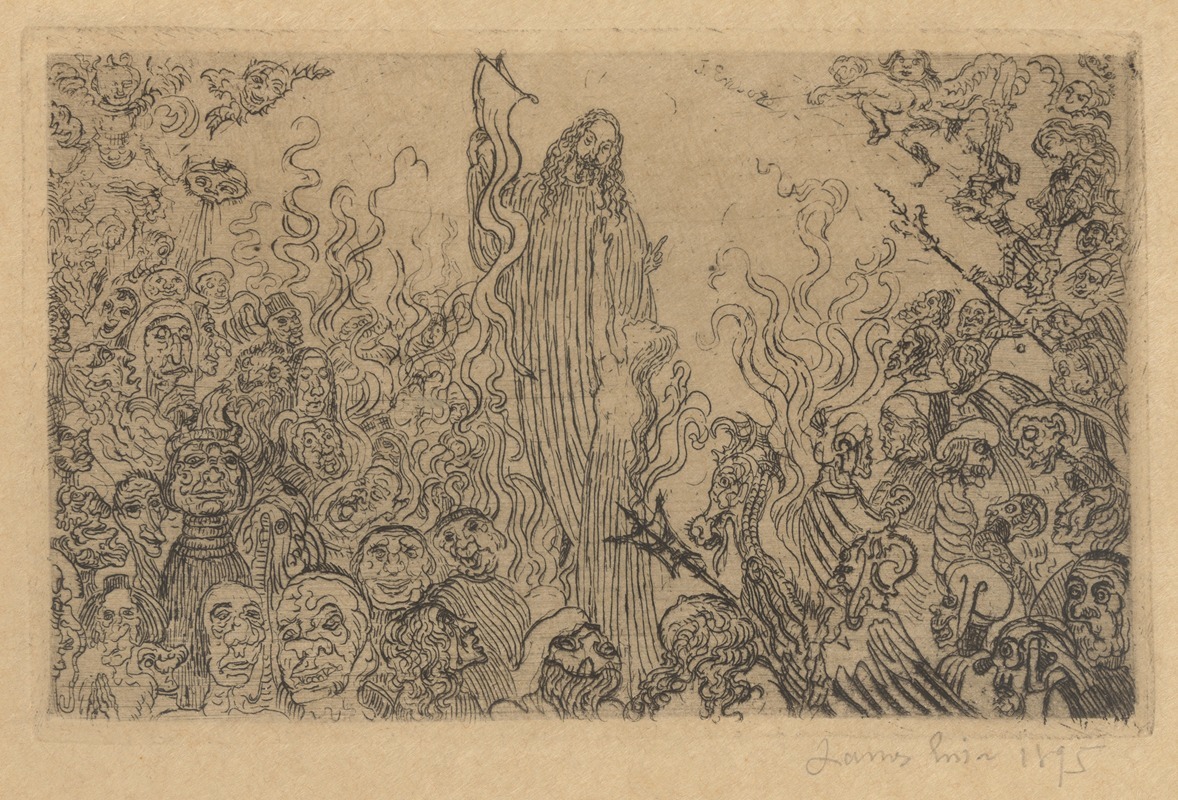
Christus daalt neer in de hel
A hand-painted replica of James Ensor’s masterpiece Christus daalt neer in de hel, meticulously crafted by professional artists to capture the true essence of the original. Each piece is created with museum-quality canvas and rare mineral pigments, carefully painted by experienced artists with delicate brushstrokes and rich, layered colors to perfectly recreate the texture of the original artwork. Unlike machine-printed reproductions, this hand-painted version brings the painting to life, infused with the artist’s emotions and skill in every stroke. Whether for personal collection or home decoration, it instantly elevates the artistic atmosphere of any space.
James Ensor's painting "Christus daalt neer in de hel" (Christ Descends into Hell) is a notable work by the Belgian artist, who is renowned for his unique style and contribution to the Symbolist movement. Ensor, born in 1860 in Ostend, Belgium, is celebrated for his innovative use of color and his often satirical and macabre subject matter. His works frequently explore themes of death, religion, and the grotesque, reflecting his fascination with the darker aspects of human existence.
"Christus daalt neer in de hel" is a compelling example of Ensor's exploration of religious themes through a distinctive lens. The painting depicts the biblical event known as the Harrowing of Hell, where Christ is believed to have descended into Hell between his crucifixion and resurrection to save the righteous souls. This theme has been a popular subject in Christian art, symbolizing redemption and the triumph of good over evil.
Ensor's interpretation of this event is characterized by his signature style, which blends elements of realism with fantastical and often unsettling imagery. The painting is marked by vivid colors and dynamic composition, drawing the viewer into the dramatic scene. Ensor's use of light and shadow adds to the intensity of the depiction, highlighting the contrast between the divine presence of Christ and the chaotic environment of Hell.
In "Christus daalt neer in de hel," Ensor employs a range of symbolic elements to convey the narrative. The figures in the painting are rendered with exaggerated expressions and poses, a hallmark of Ensor's work that underscores the emotional and psychological depth of the scene. The chaotic arrangement of figures and the tumultuous setting reflect Ensor's interest in the complexities of human emotion and the existential struggles faced by individuals.
Ensor's work often includes a critique of societal norms and religious institutions, and "Christus daalt neer in de hel" can be seen as part of this broader commentary. By choosing to depict a moment of divine intervention in a setting of chaos and suffering, Ensor invites viewers to reflect on the nature of salvation and the human condition.
The painting is also notable for its technical execution. Ensor's mastery of color and form is evident in the way he captures the interplay of light and shadow, creating a sense of movement and energy. His use of bold, contrasting colors enhances the dramatic impact of the scene, drawing attention to the central figure of Christ and the surrounding figures.
"Christus daalt neer in de hel" is housed in the Royal Museum of Fine Arts in Antwerp, Belgium, where it continues to be a subject of study and admiration. The painting is an important part of Ensor's oeuvre, exemplifying his unique approach to religious themes and his contribution to the development of modern art.
James Ensor's work, including "Christus daalt neer in de hel," remains influential in the art world, inspiring subsequent generations of artists to explore the boundaries of expression and the complexities of the human experience. His ability to blend traditional religious iconography with a modern, often critical perspective has secured his place as a pivotal figure in the history of art.





